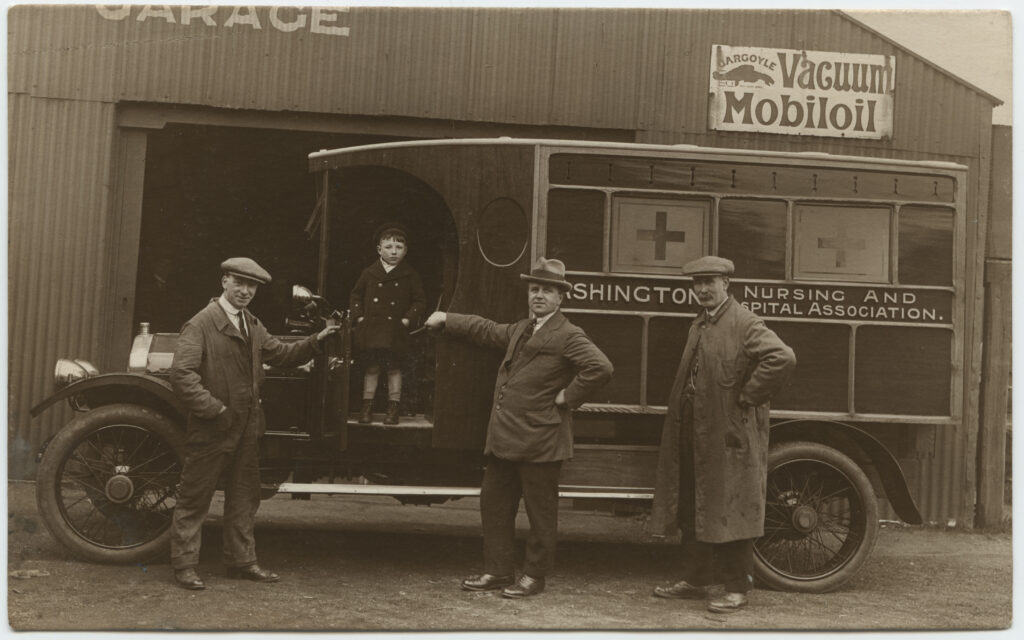
This blog has been researched and written by Dee Love, one of the volunteers on our maternity care project. Project volunteers are researching maternity care in Northumberland with particular focus on Castle Hills Maternity Home, Berwick, and Mona Taylor Maternity Home, Stannington. The blog is based on wider research exploring maternity provision in Northumberland.
Before the establishment of the NHS in 1948 the majority of women gave birth at home but on occasions complications would arise and they would need to be taken to hospital. Women in Ashington and the surrounding district often had to travel to Mona Taylor in Stannington, to Beulah House in Blyth or to The Princess Mary Unit in Newcastle. There were rail links from Newbiggin and Ashington to Blyth and Stannington but it would have been a long, uncomfortable journey for pregnant women. Few families owned cars at that time.
The ambulance service as we know it began in 1948 and when the Government decided that the service should be free to all patients in need. The 1946 NHS Act required the Local Authorities to provide an ambulance service where necessary. To begin with it was staffed by volunteers and professionals were gradually introduced. Eventually the service became a discrete part of the NHS.
Prior to 1948 patients paid for ambulance transport. It is documented that pregnant women in and around Ashington were paying £3 for an ambulance to take them to the Princess Mary Hospital in Newcastle. In the meantime, the Medical Officer for Health’s Annual report for 1926 on The Urban District of Amble states that the only ambulance provision in the town was the colliery ambulance from Broomhill Colliery three miles away.
Newbiggin, Pegswood and North Seaton Collieries also provided an ambulance service paid for by miners’ subscriptions to the Miners’ Welfare Fund. The service was free to subscribers and non-subscribers paid a fee. I found no mention of how much that fee was.
The 999 number to summon an ambulance was introduced in 1937. At that time there would have been very few telephones in people’s homes. The first public phone boxes were introduced in the United Kingdom in 1921. It is most likely that in the early days of the ambulance service that G.Ps organized ambulances when necessary.
The M.O.H. Annual Accounts for Ashington in 1949 record that the County Council provided five Ambulances and nine drivers who worked shifts to provide a 24 hour service and in 1950 the County Council provided an ambulance service for Newbiggin.
